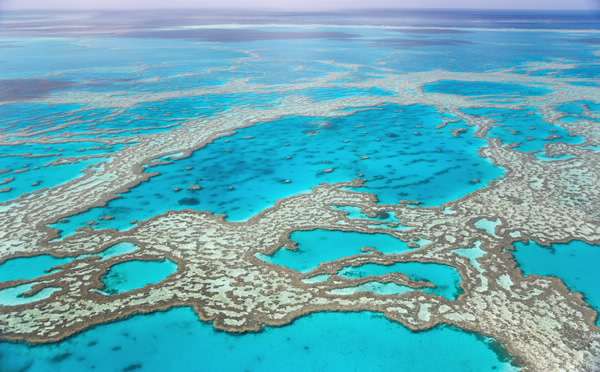Radiocarbon dating reveals past fall in sea level

When carbonate samples from One Tree Reef in southern Great Barrier Reef arrived at ANSTO for radiocarbon dating, Principle Research Scientist Quan Hua was confident they could accurately determine the age of the marine material.
He did not anticipate that the samples would provide surprising evidence that a small fall in sea level significantly slows down the growth of the reef.
Dr Hua, an authority on radiocarbon dating and its applications at the Institute for Environmental Research, has worked for 20 years dating marine samples, cave deposits, tree rings, and sediments using natural isotopes of carbon.
Radiocarbon dating has been particularly useful in environmental and climate science research.
The reef samples were collected by Daniel Harris and two colleagues from the School of Geosciences at University of Sydney, where Daniel was studying for a PhD at the time.
Daniel was also the recipient of an Australian Institute of Nuclear Science and Engineering (AINSE) Post Graduate Research Award for the study of reef evolution on One Tree Reef.
Radiocarbon dating of the samples by accelerator mass spectrometry (AMS) provided the evidence for a recent paper by Daniel Harris, Quan Hua, and four other collaborators, published in the prestigious journal Geology in January 2015.
The researchers aimed to examine reef evolution during the Holocene (~11,500 years ago to the present). Understanding how the Great Barrier Reef responded to changes in environmental conditions in the past could be helpful in predicting how the reef might respond to future climate variability.
The samples comprised sediment cores from reef lagoons and fossils from micro-atoll corals. Small single cell reef organisms, foraminifera, molluscs and corals become fossilised over time and their skeletal remains constitute the reef sediment. They are reliable for radiocarbon dating because of their preservation and significant calcium carbonate content.
"Reefs grow vertically during rising sea level. Once at sea level, reefs expand laterally by lagoonal infilling through sand accretion. One of the most interesting findings of this study is that it challenges the current conceptual model of continuous infilling of sediment over the past 6000 years," said Quan.
The paper authors point out that the majority of lagoon infilling occurred between 6000 and 2000 years ago, when sea level was at highstand (an interval during which the sea level was above the edge of a continental shelf), and was almost turned off by a relatively small sea level fall of ~1m during the past 2000 years.
The Centre for Accelerator Science (CAS) at ANSTO, which houses four particle accelerators and a comprehensive suite of AMS chemistry sample preparation laboratories, was used in the research because it is one of only a small number of AMS facilities in the world that can analyse ultra-small samples containing less than 100 micrograms of carbon.
"It is particularly important to start with well-preserved samples. For example, single grain samples of foraminifera, in which the structural features are sharp, the spines are intact and the colour is rich, are chosen for dating. We do this by close examination using a binocular microscope," explained Quan.
"We also inspect the samples using scanning electron microscopy to ensure they don't have any secondary deposits of calcium carbonate that may cause problems in dating accurately."
Each carbonate sample is converted to CO2 by reacting with acid, and then reduced to graphite (a natural form of carbon) over an iron catalyst. The graphite is then pressed on to an aluminium cathode for AMS radiocarbon measurements.
There were 50 new radiocarbon ages presented in the research paper, 44 of which were provided by ANSTO. The remaining six were measured at Queen's University Belfast.
"Radiocarbon continues to be one of the most well established and reliable means of dating material for the past 50,000 years," said Quan.
Dating samples for the more recent past requires age calibration to account for atmospheric nuclear detonations in the 20th century, according to Quan, who published a paper on atmospheric radiocarbon for the period 1950-2010 in Radiocarbon in 2013.
The combination of state-of-the-art instruments and scientists with expertise in the environmental sciences and nuclear techniques continues to be a critical resource for understanding and evaluating the encroaching impact of climate variability and other environmental issues.
Journal information: Geology
Provided by ANSTO
















